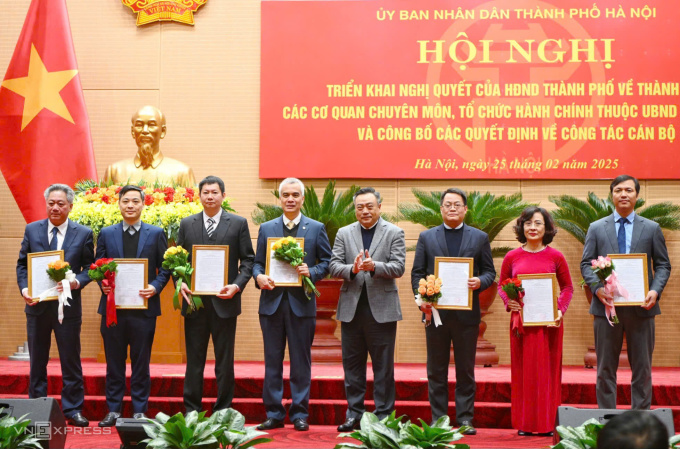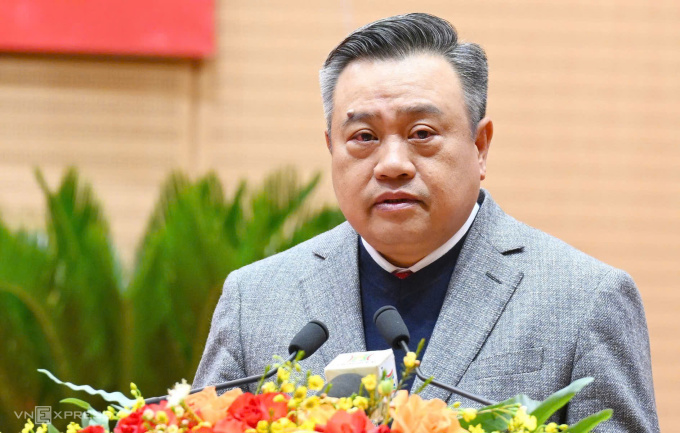Hanoi's New Leadership Restructures Administration for Efficiency
Hanoi's groundbreaking administrative restructuring introduces new leadership and aims to enhance public service delivery for a more efficient city governance.

Key Points
- Hanoi's administrative restructuring reduces the number of departments from 21 to 15, enhancing operational efficiency.
- Newly appointed leaders, including directors for Finance and Agriculture, aim to foster innovative and citizen-centered governance.
- The establishment of a Center for Public Administrative Services seeks to streamline processes and improve public trust in government.
On February 25, 2025, a significant milestone was reached in the governance of Hanoi, as the city’s local government officially announced its new leadership following the merger of several administrative departments. This strategic move aims to streamline operations, enhance efficiency, and provide better services to the citizens of Hanoi. The decision reflects a broader trend of modernization in administrative practices, and it emphasizes the need for adaptive leadership in a rapidly changing environment.
The New Administrative Structure
The transformation of Hanoi’s administrative framework will see a reduction from 21 departments to 15, marking a decrease of six departments. This consolidation involves merging existing departments to create specialized entities that can function more effectively. For instance, the new Department of Finance formed through the merger of the Department of Planning and Investment with the former Department of Finance, underscores a commitment to more cohesive financial management. Similarly, the newly established Department of Agriculture and Environment comes from the integration of the Department of Agriculture and Rural Development with the Department of Natural Resources and Environment.

Such mergers not only aim at improving service delivery but also emphasize the value of collaboration among different governmental sectors. By pooling resources and expertise, the city can better address complex issues that intersect various domains—especially in areas like urban planning, public health, and environmental conservation.
New Leaders and Vision
At the helm of this administrative shift are newly appointed leaders bringing fresh perspectives and diverse experiences. The appointment of Nguyễn Xuân Lưu as the Director of the Department of Finance and Nguyễn Xuân Đại as the Director of the Department of Agriculture and Environment highlights a strategic choice for experienced professionals who are expected to lead their respective departments through this transition with foresight and dedication.
Moreover, the appointment of Bạch Liên Hương as the Director of the Department of Culture and Sports is critical for promoting Hanoi’s cultural heritage and sporting initiatives, showing how leadership roles are designed to inspire civic pride and community engagement. These leaders are not just administrative heads; they are visionaries tasked with steering Hanoi toward a brighter future.

Enhancing Service Delivery
The restructuring is poised to enhance public service delivery and improve responsiveness to citizens’ needs. By streamlining operations, the city aims to cut bureaucratic red tape, ultimately leading to quicker decision-making processes. The reorganization also includes the establishment of the Center for Public Administrative Services, which is being piloted as part of the government's modern response to citizen engagement.
This initiative not only modernizes services but also allows for a more citizen-centered approach in governance. With a focus on transparency and accountability, these changes are designed to help restore public trust in governmental institutions. For instance, the integration of the Foreign Affairs Department into the mayor’s office illustrates a strategic decision to enhance communication and diplomatic relations, necessary for a city that thrives on trade and tourism.

Looking Ahead
As Hanoi embarks on this transformative journey, the implications extend beyond mere structural changes. This moment marks a commitment to adaptability in governance, acknowledging the evolving needs of both citizens and the larger socio-economic landscape. By embracing change and fostering innovative leadership, Hanoi is positioning itself as a model for other cities undergoing similar governmental transitions.
This is indeed an exciting era for Hanoi. The newly appointed leaders have the opportunity to not only redefine operational efficiency but also to inspire a new generation of public servants dedicated to the service of their communities. With the right guidance and vision, the city is set to navigate the future with confidence and resilience.


